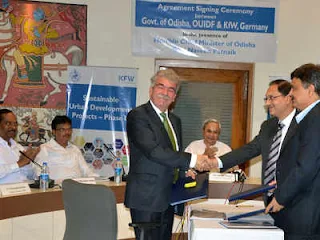A noble step in the direction of preventing/reducing miseries that disasters bring along.

- Odisha Government has singed Memorandum of Understanding (MoU) with Regional Integrated Multi-Hazard Early Warning System (RIMES) to enhance effective management of all kinds of disasters.
- The collaboration is aimed at automating risk management, advisory generation and dissemination.
More about the collaboration:
- The partnership has been forged between Odisha State Disaster Mitigation Authority (OSDMA) and RIMES in field of drought monitoring and early warning for different natural disasters.
1. Flood
2. Drought
3. Heat Wave
4. Lightning
5. Road Accidents
- Initially, the MoU will be in force for 5 years with cost involvement of about Rs. 8 crore.
- Under it, efforts will be made to create open-source software platforms and public domain data sets using weather and climate information, sourced from the India Meteorological Department (IMD).
What will be gained from this collaboration?
- The collaboration will help OSDMA to engage integrated multi-hazard early warning system to strengthen its prediction and response capability.
- It will also strengthen OSDMA for more effective management of natural disasters.
- It will also help in transfer of best practices among different countries of world in handling natural disasters.
- It will also enhance warning response capacities of OSDMA by imparting specialized expert training.
- It will also help to develop one-stop risk management system for all OSDMA needs such as integration of multiple data database/servers.
Regional Integrated Multi-Hazard Early Warning System (RIMES)
- The RIMES is an intergovernmental body registered under United Nations.
- It is owned and managed by 45 collaborating countries in Asia Pacific and Africa Region.
- India is chairman of the body.
- It was established in 2009 and was registered with UN in July 2009.
- It was established in 2009 and was registered with UN in July 2009.
- It operates from its regional early warning centre located at campus of Asian Institute of Technology in Pathumthani, Thailand.
- It has evolved from efforts of countries in Africa and Asia in aftermath of 2004 Indian Ocean tsunami.
- It seeks to establish regional early warning system within multi-hazard framework for generation and communication of early warning information and capacity building for preparedness and response to trans-boundary hazards.
- It provides information related to Tsunami and extreme weather conditions.
- It also acts as a test bed for emerging technologies and help to enhance performance.


